Discover 11 hidden attractions, cool sights, and unusual things to do in San Juan National Forest (United States). Don't miss out on these must-see attractions: Treasure Falls, Hesperus Mountain, and Rico Town Hall. Also, be sure to include Wolf Creek Pass in your itinerary.
Below, you can find the list of the most amazing places you should visit in San Juan National Forest (Colorado).
Table of Contents
Treasure Falls
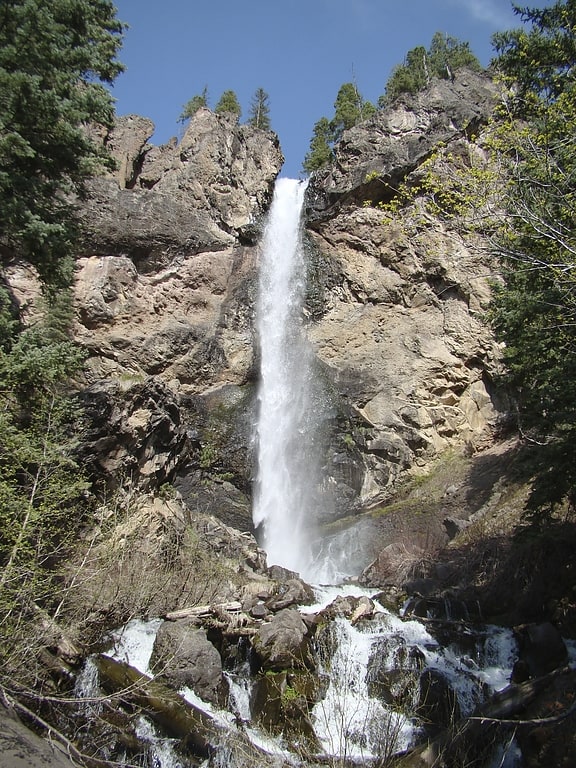
Waterfall in Colorado. Treasure Falls is a waterfall in the San Juan Mountains, within Mineral County, Colorado. It is located in the San Juan National Forest, off U.S. Highway 160, about 15 miles northeast of Pagosa Springs. The falls are named after a local legend about "a treasure of gold" buried in the mountain that the falls plunge from.[1]
Address: Wolf Creek Pass, San Juan National Forest
Hesperus Mountain

Summit in Colorado. Hesperus Mountain is the highest summit of the La Plata Mountains range of the Rocky Mountains of North America. The prominent 13,237-foot thirteener is located in San Juan National Forest, 13.2 miles northeast by east of the Town of Mancos in Montezuma County, Colorado, United States. The summit of Hesperus Mountain is the highest point in Montezuma County.[2]
Rico Town Hall
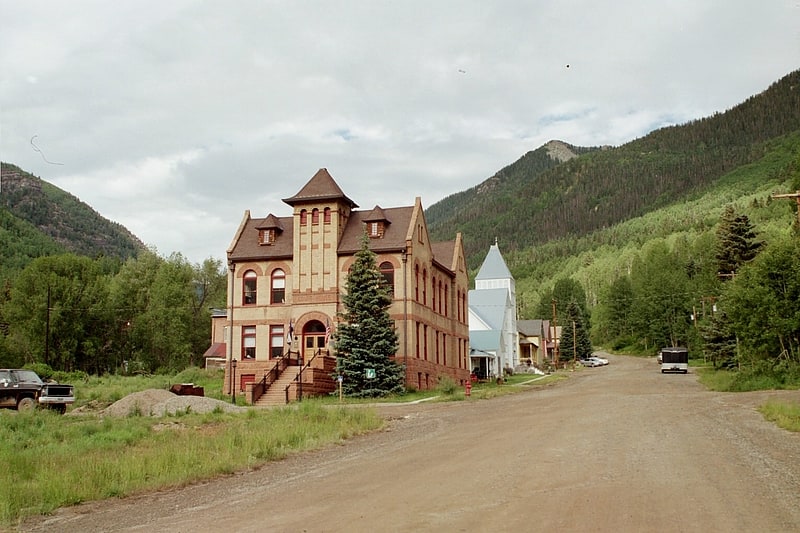
City government office in Rico, Colorado. Rico Town Hall or Rico City Hall is a multi-purpose building in the tiny mountain mining town of Rico, Colorado. Rico was formerly the county seat of Dolores County, and the city hall was built as the Dolores County Courthouse in 1892 by a "Mr. Carpenter." At the time Rico was in the middle of a gold boom and had a population of 4,000. Over time the county's population shifted to Dove Creek, and after 53 years the county seat moved in 1946. The courthouse remained vacant until 1955, when it was transferred to Rico for town offices and meeting space.
The new courthouse replaced a log courthouse. It is built of dense red sandstone from the Cutler Formation in Ouray on a local granite foundation. Brick came from the Durango Brick Yard at Lightner Creek. The 2+1⁄2-story structure features arched windows and parapeted end gables, with a central tower that projects slightly above the steep main roof over the entrance.
The Rico Town Hall was placed on the National Register of Historic Places on December 31, 1974.[3]
Wolf Creek Pass
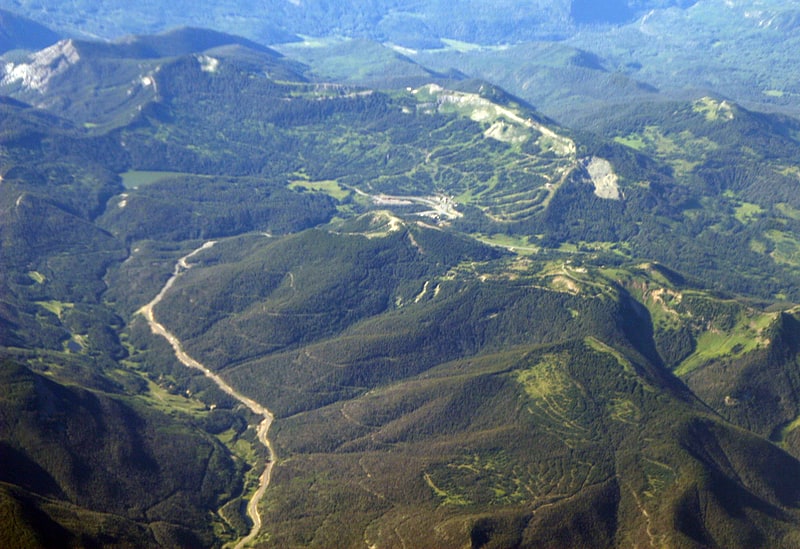
Mountain pass in Colorado. Wolf Creek Pass is a high mountain pass on the Continental Divide, in the San Juan Mountains of Colorado. It is the route through which U.S. Highway 160 passes from the San Luis Valley into southwest Colorado on its way to New Mexico and Arizona. The pass is notable as inspiration of a C. W. McCall song. The pass is significantly steep on either side and can be dangerous in winter. There are two runaway truck ramps on the westbound side for truckers that lose control of their brakes.[4]
Lone Cone
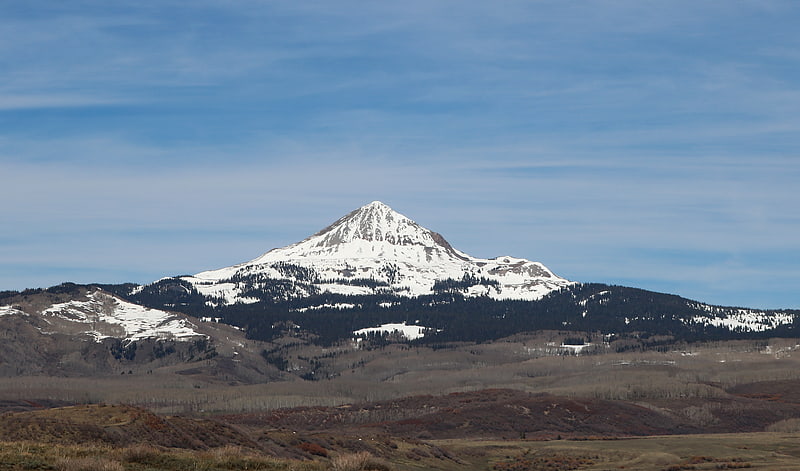
Mountain in Colorado. Lone Cone is a prominent mountain summit at the western end of the San Miguel Mountains range of the Rocky Mountains of North America. The 12,618-foot peak is located 24.2 miles west by south of the Town of Telluride, Colorado, United States, on the drainage divide separating San Juan National Forest and Dolores County from Uncompahgre National Forest and San Miguel County.[5]
Sultan Mountain
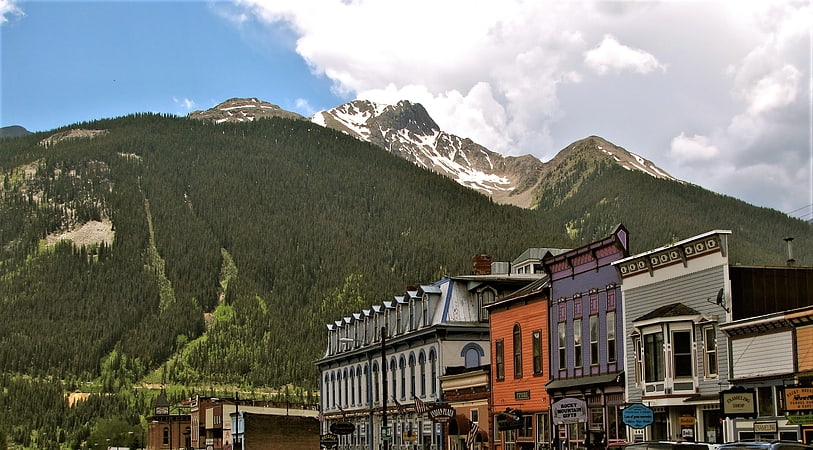
Peak in Colorado. Sultan Mountain, elevation 13,373 ft, is a peak of the San Juan Mountains range in San Juan County, southwestern Colorado.
It is located southwest of the town of Silverton.[6]
Lemon Dam
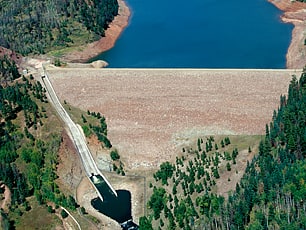
Historical landmark in La Plata County, Colorado. The earthen dam is a project of the United States Bureau of Reclamation and was completed in 1963, at 284 feet high and 1,360 feet long at its crest. The dam impounds the Florida River for flood control and irrigation water storage, operated by the local Florida Water Conservancy District. 120 kW of hydroelectric power is generated here.
Lemon Reservoir is about three miles (4.8 km) long, one-half mile (0.8 km) wide, has a total surface area of 622 acres (252 ha) and a total capacity of 40,145 acre-feet.[7]
Dey Building

Historical place in Rico, Colorado. The Dey Building is a building in Rico, Colorado, USA, that is listed on the National Register of Historic Places for its importance as a significant local commercial building, and for its Romanesque Revival style. The Dey Building was built in 1892 with a saloon on the ground floor and offices in the upper level. The saloon has been in almost continuous operation throughout the building's history. The local newspaper refers to an H.J. Dey who operated a saloon in Rico during the 1880s, but no evidence other than the name connects Dey to the Dey Building.[8]
Lavender Peak
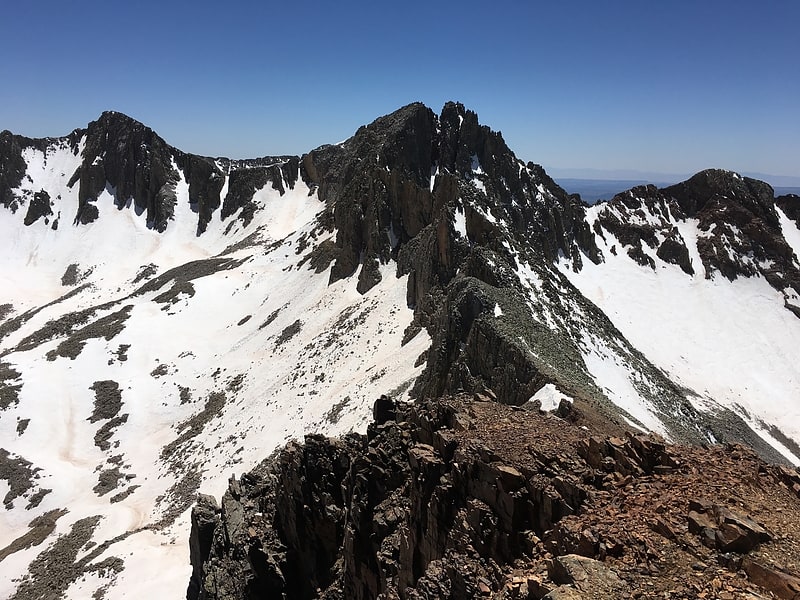
Mountain in Colorado. Lavender Peak is a high mountain summit in the La Plata Mountains range of the Rocky Mountains of North America. The 13,233-foot thirteener is located in San Juan National Forest, 13.5 miles northeast by east of the Town of Mancos in Montezuma County, Colorado, United States. The peak lies 0.53 miles east-southeast of the higher and more well-known Hesperus Mountain. Lavender Peak was named in honor of Dwight Garrigues Lavender, the author of a 1932 climbing guide to the San Juan Mountains.[9]
Debs School
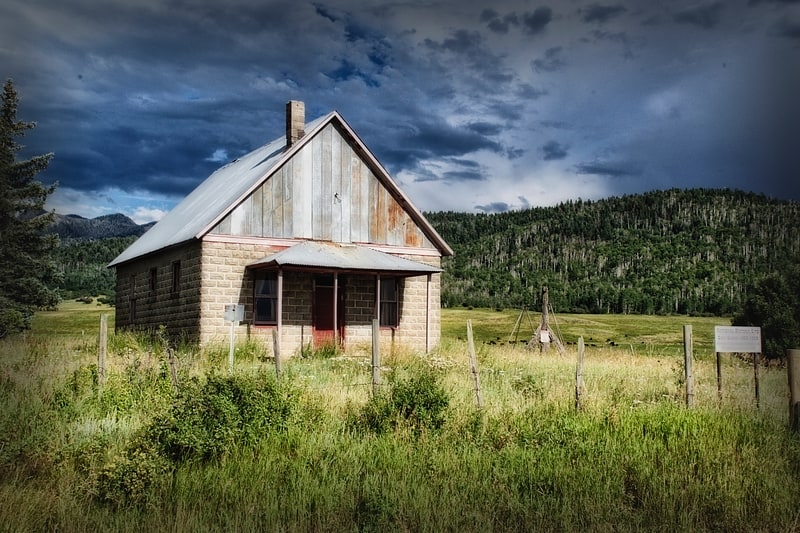
The Debs School is an historic rural schoolhouse that was built in 1926 in Hinsdale County, Colorado. It is located near Pagosa Springs, Colorado. It has also been known as Upper Piedra School, 5HN642, and the Debs Community Building. It was listed on the National Register of Historic Places in 2005.
It is Hinsdale County's only surviving one-room schoolhouse. It was deemed significant for its architecture: its exterior walls are built of rock face ornamental concrete blocks, one of three identified schools in the state using that construction. It was named for socialist labor leader Eugene Debs. It served as a school from 1926 to 1951; it also served as a meeting hall.[10]
William Kauffman House
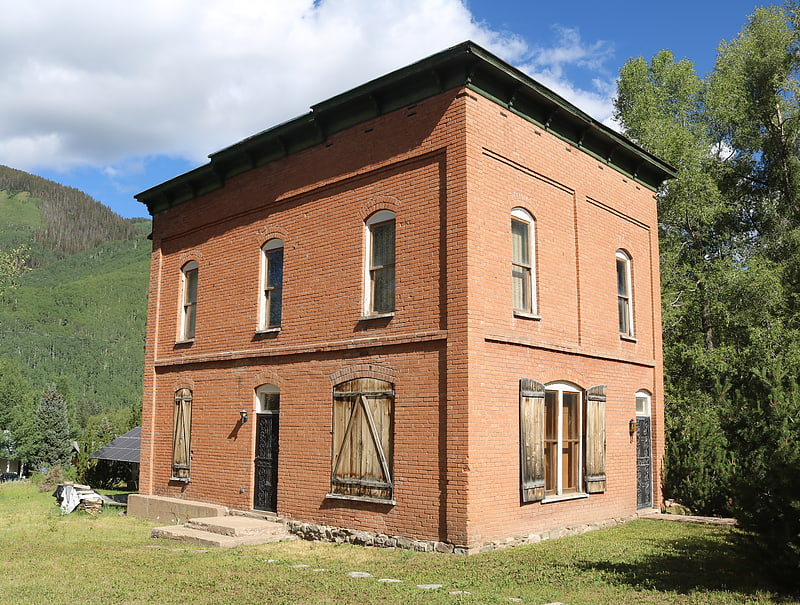
The William Kauffman House is the only historic brick or masonry house in Rico, Colorado. Built in 1891 during the mining boom that drove Rico's population to 4,000, the house was the residence of the Kauffman family until 1915. In the 1940s it was acquired by the Rico Argentine Mining Company and used for worker housing until the mine closed in 1971. Vacant during the 1970s, it was restored in the early 1980s.
The rectangular two-story house has plain detailing with a shallow-pitched roof sloping to the rear. The brick facade is detailed with recessed bays and a wood cornice on the south and east sides. There was once a porch on the west and south sides. The tall windows and doors have segmental-arched tops.
The Kauffman House was placed on the National Register of Historic Places on October 29, 1982.[11]